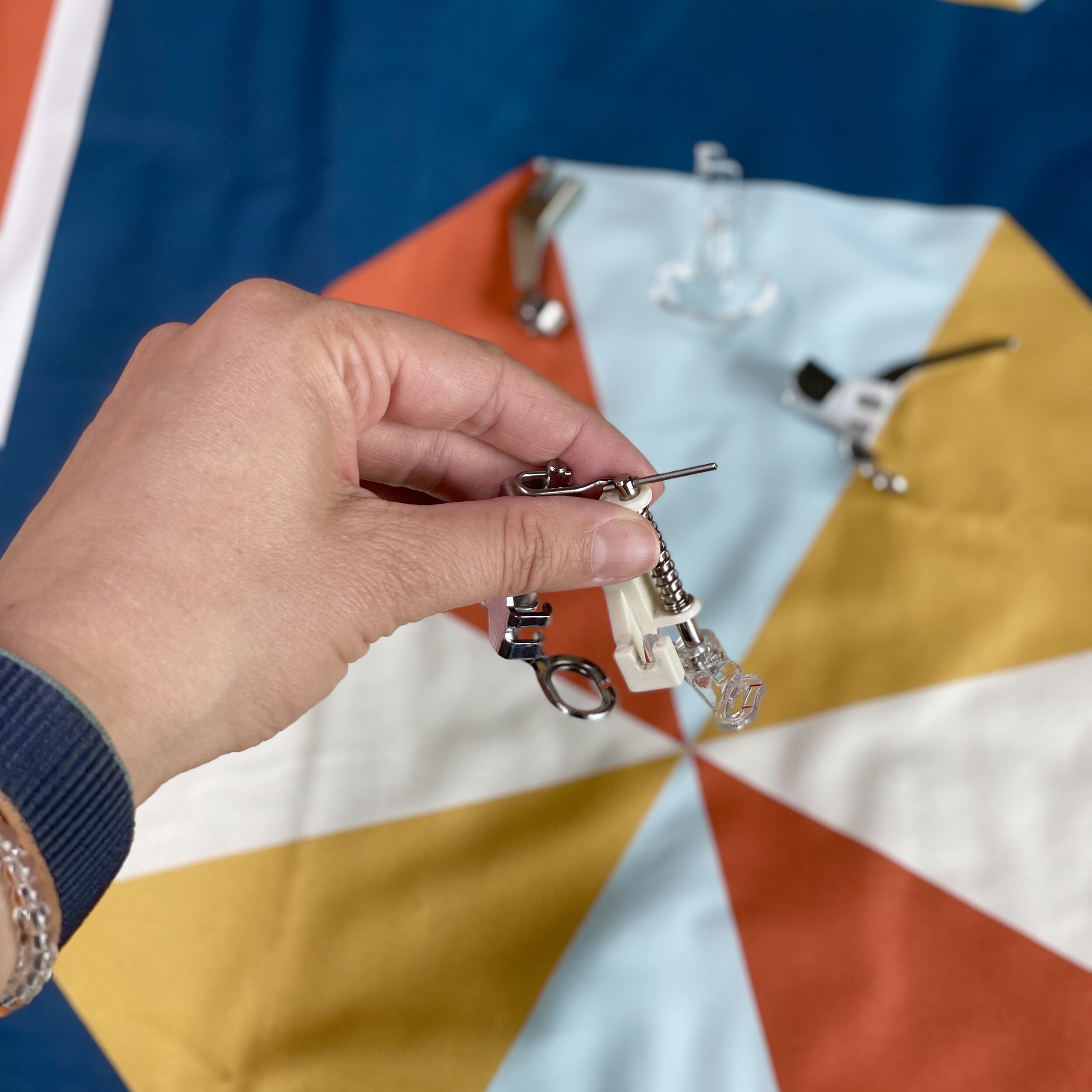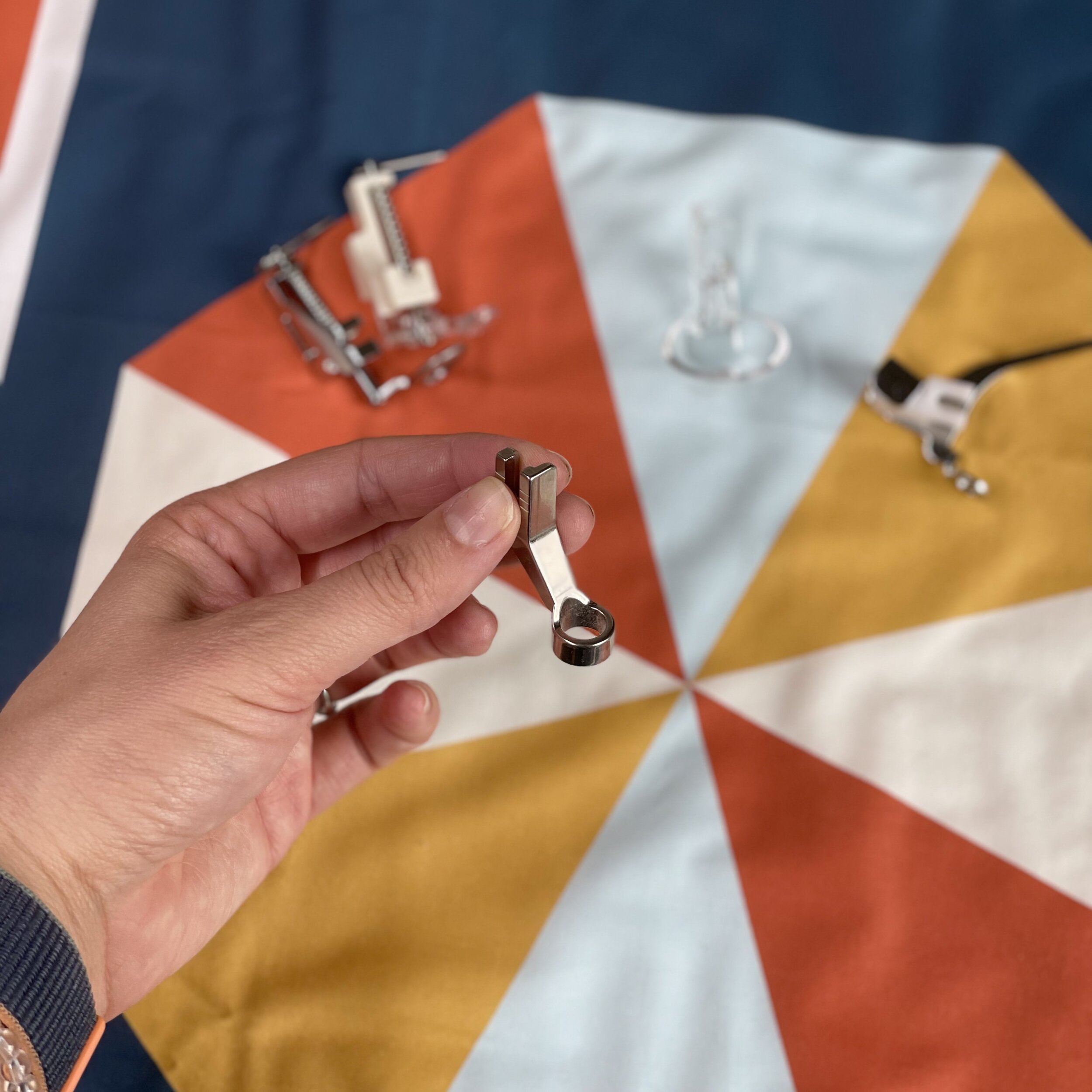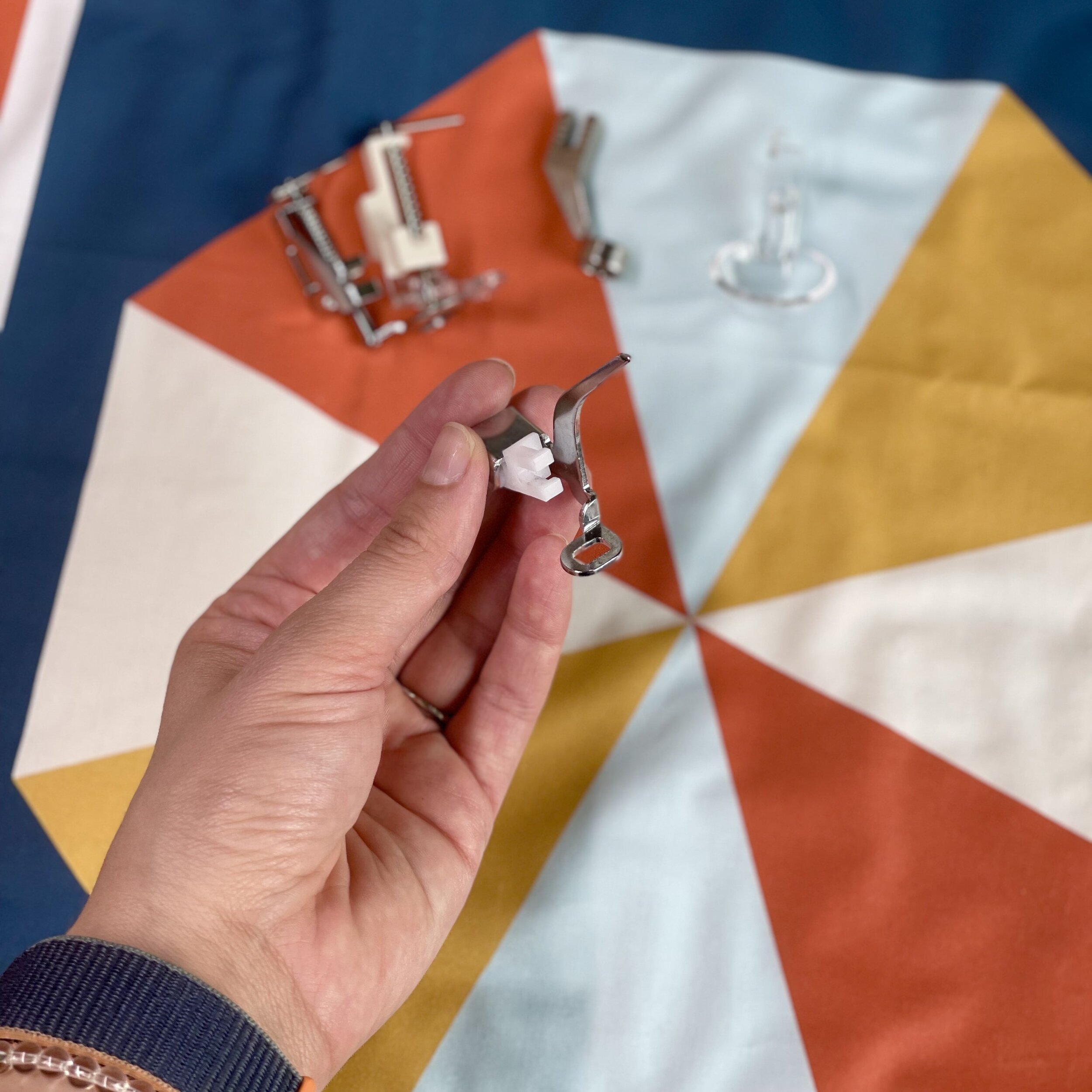Sewing Machine Feet for Free Motion Quilting
There are dozens of sewing machine feet choices for all the different tasks and techniques you can stitch on modern sewing machines. But which ones are best for free motion quilting, and how do you decide which one is best for the stitching you have planned? Let’s take a look at some of the most popular choices.
(This post contains affiliate links)
I first discovered free motion quilting when I was trying to figure out how to make a tshirt quilt and was mesmerized by the doodle like stitching I found online. I began to research techniques, etc, but it was confusing to find out exactly what all the different feet were for and when I needed to invest in or use each one. Let’s go through them together, so you don’t have to be confused!
Video
Types of Feet
Hopping Foot
This is the most common type of free motion quilting foot. It is usually made of a plastic or metal oval that rests gently on the fabric (This oval can be complete— called a closed toe foot— or have a section open at the front— called an open toed foot). It has an arm that rests on the screw of the machine shank and a spring that causes the machine to “hop” up and down as the needle moves. I love this foot because it’s easy to find one to fit your machine (knowing if you have a “high shank” or “low shank” is the most important step), they provide good visibility, and they are inexpensive.
Ruler Foot
A ruler foot is crucial if you want to use a quilting ruler to create straight lines or special curves on your quilt (learn more about quilting with a ruler HERE). A quilting ruler is 1/4” thick so that it cannot slip over or under the high sides of the ruler foot. A ruler foot is a metal circle 1/4” high. If you are new to using this foot, it can feel like it only offers limited visibility. It becomes easier to use for FMQ with practice, however, and is handy because it allows the quilter to switch seamlessly back and forth between freehand FMQ and ruler quilting (or using a ruler for guided stitch in the ditch). I recommend checking with your dealer or machine manufacturer to purchase this foot.
Glide Foot
This foot is also called a “spoon foot” because it looks a whole lot like someone took a deep plastic spoon and punched a whole through the center. All of the other FMQ feet have some sort of “edge” that has to pass over the fabric, but this food is specifically designed to “glide” right over bulkier seams making for a better FMQ experience. I especially recommend this foot if you make a lot of traditional style quilt with heavier seams. I recommend checking with your dealer or machine manufacturer to purchase this foot.
Darning Foot
The darning foot is one of the more generic FMQ feet on the market because it is also designed to be used with machine embroidery or free hand machine embroidery. In my experience, this foot doesn’t move quite as smoothly because of how the edges are shaped, and it’s important to make sure your presser foot is down before lowering your needle. If this foot comes with your machine, it’s a perfect way to start experimenting with FMQ, but if you’re going to buy a foot, I’d start with a hopping or ruler foot instead.
Concluding Thoughts
If you’re brand new to free motion quilting, I recommend starting off with a hopping foot— the clear type if you can find it for your machine. Ultimately, I recommend all quilters who quilt all or most of their quilts add the ruler foot and glide foot to their collection as well. It just makes doing each of those different jobs so much easier! Finally, here are a few more resources on Free Motion Quilting you may enjoy:
Share this blog if you found it helpful:





